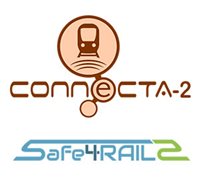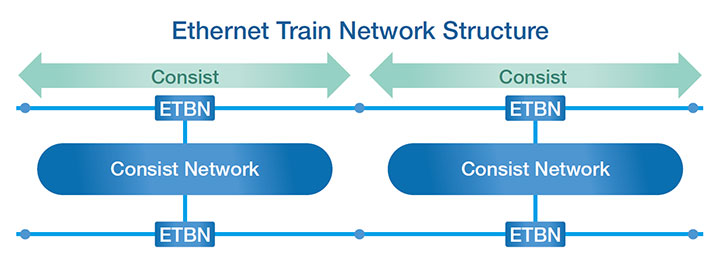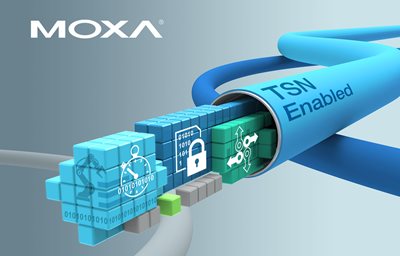Conventionally, the railway sector typically employs trains equipped with multiple communication networks: one for train controls, another for railway signaling, a separate one for video security and passenger information systems, and often an additional network for passenger Wi-Fi access. These communication networks mainly utilize outdated interfaces like MVB, CAN, and PROFIBUS, which come with bandwidth constraints and necessitate a gateway if combined. However, these networks are physically isolated, effectively segregating safety and non-safety functions. Nevertheless, such solutions lead to increased complexity and expenses in the architecture of train control and monitoring systems, ultimately impacting the train’s life-cycle cost.
Striving towards the ambitious objective of merging these diverse train networks and reducing train production and maintenance expenses, the DRIVE-BY-DATA concept was introduced by the CONNECTA-2 and Safe4RAIL-2 initiatives. This concept involves digitally transmitting all control parameters of the train control and monitoring system (TCMS) subsystems over an electronic network. To achieve true interoperability between trains from different manufacturers, both partnerships have been dedicated to defining and crafting the Next Generation of Train Communication Networks (NG-TCN) based on IEC 61375. This novel concept incorporates a revamped design for the train network structure, introduces a new secure network initiation process, elevates safety communication to SIL level 4, and integrates Time-sensitive Networking (TSN) technology. These enhancements have already been implemented in NG-TCN devices, as detailed in the subsequent sections.

The Advanced Train Communication Networks (NG-TCN) Boost Safety
a) Innovative Train Network Scheme
The fresh train network structure consists of two autonomous Ethernet Train Backbone (ETB) data transmission lines to establish redundant communication paths for critical and non-critical data via dynamic VLAN reconfiguration.

b) Secure Train Initialization
The secure train initiation process up to SIL4 enables a robust train coupling and decoupling routine. This updated mechanism utilizes standard Ethernet communication to incorporate safety functions that depend on crucial parameters from the train initialization process such as train, consist, and vehicle orientation.
c) Reliable Communication Path
The dependable communication path applies the SDTv4 protocol to facilitate safety functions up to SIL4, ensuring a secure medium for transmitting point-to-point information between end devices across consists.
d) Timely Network
TSN technology sets specific time slots for transmitting safety-critical data and prevents non-safety critical data from being sent over the network during these periods.
NG-TCN Devices Interoperate Seamlessly
The establishment of NG-TCN devices, incorporating TSN technology, represents a breakthrough in the field. Moxa, in collaboration with other members of the Safe4RAIL-2 consortium, has successfully developed the NG-TCN devices as a significant achievement in creating safer train networks. Particularly, the integration of TSN technology ingrained in Moxa’s devices and its subsequent validation for interoperability played a crucial role in fulfilling the primary objectives of the Safe4RAIL-2 project, aiming to consolidate train networks and reduce overall train expenditures. The key aspects of TSN technology are as follows

a) Redundant Clock Synchronization
Redundant clock synchronization as defined in IEEE 802.1AS-rev enables TSN devices to synchronize a common real-time clock across the network and across different domains.
b) Predictable Data Transmission
Scheduled traffic in alignment with IEEE 802.1Qbv ensures that critical data is transmitted at fixed, predictable intervals.
c) Duplication of Critical Traffic
Frame replication and elimination facilitate the transmission of duplicated critical data between ETB lines on both Ethernet Train Backbone channels in accordance with the IEEE 802.1CB standard.
Overall, the NG-TCN streamlines the number of devices and wiring while boosting the overall safety and dependability of train networks. Furthermore, it enables the secure transmission of safety-critical data via TSN technology and non-critical data through traditional Ethernet protocols. Moxa, in partnership with the consortium members, has conducted extensive interoperability assessments to ensure that the new specifications are suitably formulated for a potential extension of the IEC 61375 standard. The development and integration of these technologies signify a significant leap towards realizing the next era of train communication networks and attaining comprehensive interoperability between train makers.
Unveiling the CONNECTA-2 and Safe4Rail-2 Initiative
Appendix A
What Does Time-sensitive Networking (TSN) Mean?
TSN encompasses a set of standards enabling deterministic communication across common Ethernet networks. Defined by the Institute of Electrical and Electronics Engineers (IEEE), TSN entails a network traffic management system ensuring fixed time frames for end-to-end transmission latencies. All TSN devices synchronize their clocks and share a unified time reference to support real-time communication for precise industrial control operations.

This project has been financially supported by the European Union through the Horizon 2020 research and innovation program under grant number 826073. The information and opinions presented in this document are solely those of the author(s) and do not necessarily represent the official standpoint of the Shift2Rail Joint Undertaking. The JU does not assure the accuracy of the data contained in this article. Neither the JU nor any individuals acting on its behalf can be held liable for the use of the information provided.
- Not Only for Automobiles: Discovering CANbus Technology in Various Industrial Settings - October 29, 2024
- Boost Your Network Performance: An Exciting Manual to PoE Switches! - September 10, 2024
- Understanding Gigabit Switches: Industrial vs Regular Gigabit - September 4, 2024


